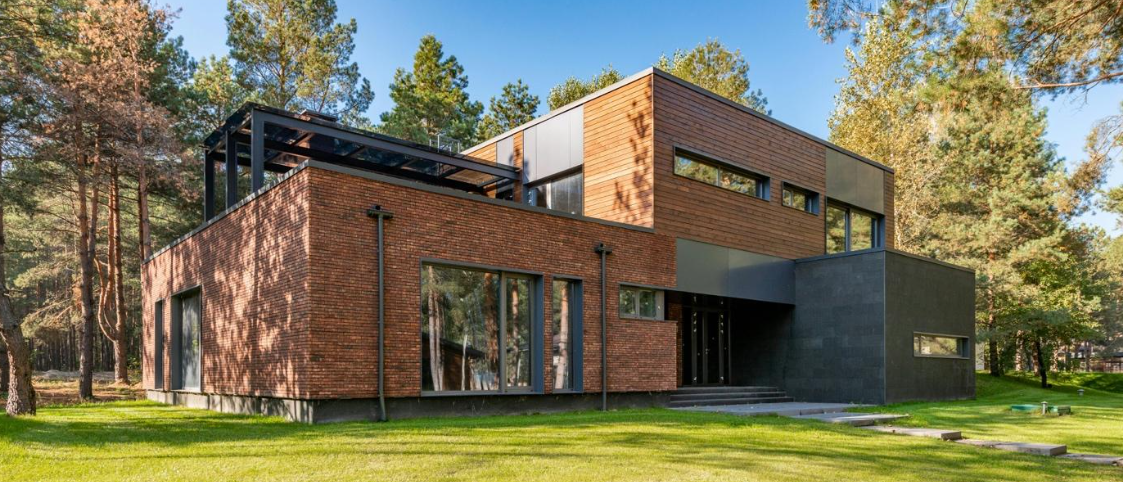The Key elements of sustainable house design
The growing movement towards sustainable architecture in construction is gaining significant momentum. It not only addresses the challenge of escalating energy costs but also resonates with homeowners' aspirations to minimise their environmental impact and embrace a greener lifestyle. As a result, numerous AEC firms have begun offering sustainable house design solutions as part of their core services. These innovative designs incorporate eco-friendly features that fulfil client requirements whilst creating healthy, sustainable living spaces. Let's explore the world of sustainable architecture house designs and how industry professionals are bringing them to life.
What Is Sustainable Architecture?
According to the UN Brundtland Commission's definition, sustainability means "meeting the needs of the present without compromising the ability of future generations to meet their own needs." As a vital branch of sustainable development, sustainable architecture focuses on creating buildings that foster healthy living environments through minimal energy consumption and efficient resource utilisation. This philosophy manifests in the choice of materials, construction techniques, and overall design approach.
Why Is Sustainable Architecture Becoming Increasingly Important?
With population growth and ongoing development, our environment faces numerous challenges, including rising CO2 emissions, urban heat island effects, excessive rainwater runoff, and heightened pollution levels. However, implementing sustainable architecture helps mitigate these environmental impacts of development.
What Are Sustainable House Designs?
Green homes are designed to preserve natural resources whilst minimising environmental impact. Rather than following a rigid template, sustainable house designs incorporate various elements that promote environmental responsibility. These homes might be oriented to maximise natural light and heat for reduced energy consumption. Architects also carefully select building materials and integrate features that support sustainable living practices.
What Are the Key Components of Sustainable Architecture and Housing Design?
Sustainable architecture comprises several interconnected elements. The features of an eco-friendly house design encompass everything from sustainable building materials to innovative solutions for energy and water conservation.
Energy Efficiency
Energy-efficient designs continue to deliver sustainability benefits long after construction is complete. These efficiencies may stem from the building materials, architectural design, or specific green features incorporated into the home. Key components of energy-efficient housing design typically include solar panels, efficient appliances, smart lighting systems, and high-performance windows.
Using Solar Panels
Solar panels transform sunlight into usable power, significantly reducing both carbon footprint and energy costs. When a home is strategically positioned to maximise natural light exposure, solar panels can effectively provide heating and lighting solutions without relying heavily on conventional electricity.
Using Energy-Efficient Appliances
The appliances in your home can serve you for many years, making their efficiency crucial for long-term sustainability. By selecting options with superior energy efficiency ratings, you can achieve substantial reductions in both energy consumption and utility costs. When choosing major appliances and electronics for your green home, prioritise those with the highest energy ratings available.
Switching to LED or CFL Lighting
Your home's monthly electricity usage can be dramatically reduced through energy-efficient lighting solutions. By transitioning to light bulbs with lower wattage and installing LED or CFL light fittings, you can achieve significant energy savings. These eco-conscious choices deliver excellent illumination whilst consuming considerably less power, ensuring your home remains well-lit and energy efficient.
Installing High-Performance Windows
A substantial amount of heat loss occurs through inefficient windows. Modern window technologies incorporate advanced insulation properties to effectively regulate indoor temperatures. When developing sustainable house designs, climate considerations play a crucial role in selecting appropriate window features. For instance, windows with low solar gain are particularly beneficial in warmer regions, whilst insulated frames and triple-glazed options prove more effective in colder climates.
Water Conservation
Efficient water management is fundamental to sustainable house design. As water becomes an increasingly precious resource, it's essential to address wasteful practices, particularly with growing population demands. Sustainable homes typically incorporate various water-saving measures, including low-flow fixtures and innovative recycling systems such as rainwater harvesting and grey-water solutions.
Low Flow Fixtures
The term 'low flow' refers to the controlled water pressure in household fixtures. Installing low-flow toilets, taps, and spigots allows for precise water usage management, preventing unnecessary waste whilst maintaining functionality.
Harvesting Rainwater
Whilst rainwater isn't suitable for all domestic purposes, it's ideal for garden irrigation, plant maintenance, and toilet flushing. A rainwater harvesting system provides cost-free water collection once installed, leading to reduced water consumption and lower utility bills.
Installing a Grey Water System
Grey-water recycling systems enable the reuse of lightly contaminated water from baths, showers, and laundry facilities. These systems efficiently repurpose water for specific tasks like toilet flushing and garden irrigation, promoting sustainable water usage.
Renewable Building Materials
The choice of construction materials significantly impacts both environmental sustainability and aesthetic appeal. Green building materials contribute positively by minimising toxins, reducing waste, and enhancing energy efficiency.
Non-Toxic Materials to Use
Non-toxic building materials release fewer volatile organic compounds and harmful substances. These materials often come from natural sources, with popular options including sustainably harvested timber, natural stone, sealed straw bale, mud brick, and concrete.
Recycled Architectural Materials
The commercial construction sector generates considerable waste, as builders often struggle to precisely estimate required materials. By repurposing these surplus materials for residential projects, homeowners can achieve significant cost savings whilst embracing green building practices, reducing the environmental impact associated with sourcing new materials.

